The Netflix Historical Action Thriller Becomes Fan-Favorite Series
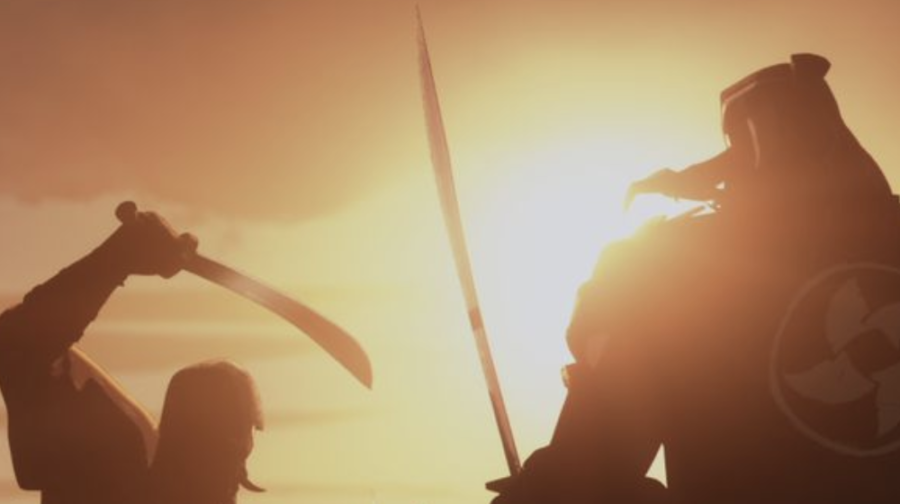
Not to tell you anything you don’t know, but ours is an era oversaturated with franchise and sequel fatigue—especially when it comes to live-action content. But over on Netflix, an animated, wholly original tour-de-force deserves your attention: Blue Eye Samurai. The series achieves an impressive and formidable simultaneity of gorgeous visuals, riveting action, stellar writing, and unforgettable characters, culminating in an unmissable show.
Blue Eye Samurai On Netflix
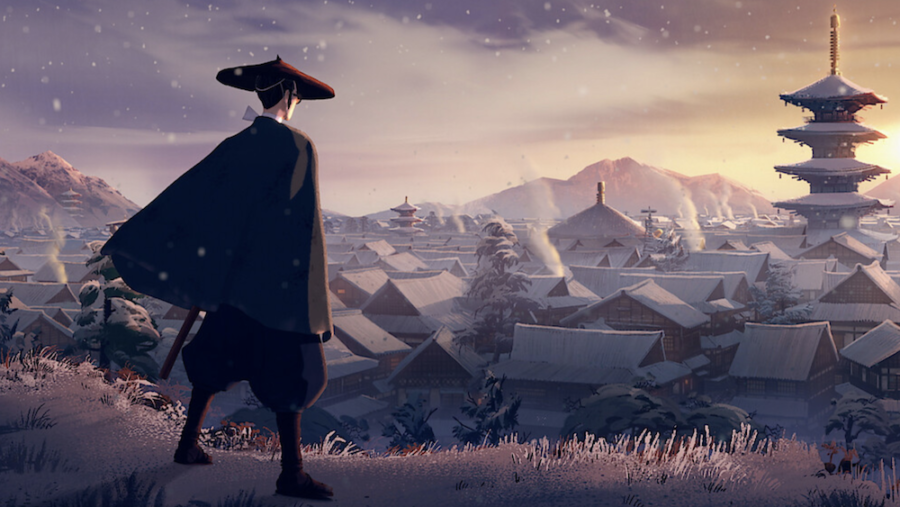
The series owes much of its originality and narrative prowess to its husband-and-wife team of co-creators, Michael Green (co-writer of Logan and Blade Runner 2049) and Amber Noizumi.
Together, they conceived the tale of Mizu (voiced by Maya Erskine), the project’s protagonist, a half-Japanese, half-white onna-musha, or warrior-woman, navigating the Edo period of Tokugawa shogunate Japan.
As any historian of Japan will tell you, it was during this epoch that Westerners were famously banned by law from the island Shoganate. While their descendants, like Mizu, were shunned and despised—literally considered monsters.
Quest For Revenge
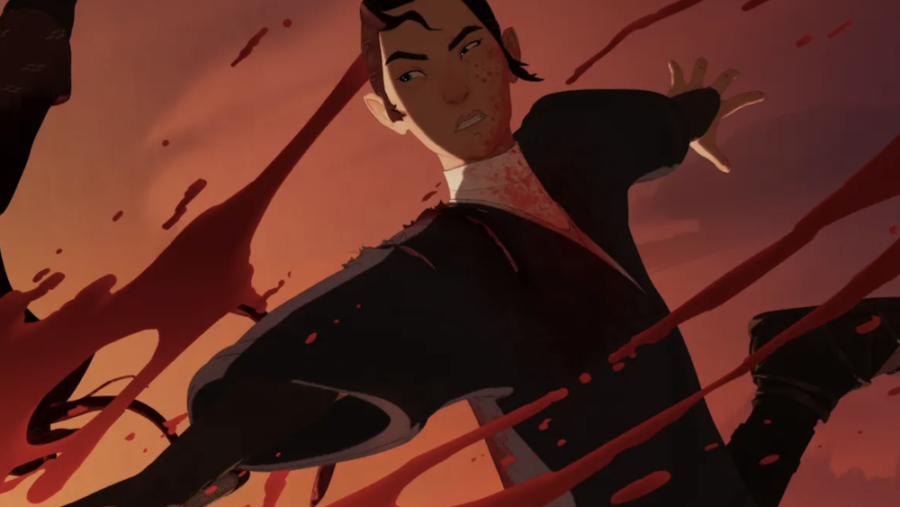
On a katana-wielding quest for revenge, Mizu disguises two aspects of her identity: her gender, which she hides by dressing and passing as a man, and her blue eyes—concealed behind tinted glasses. These eyes lend their shade to the series’ title: Blue Eye Samurai.
Discriminated against for her mixed heritage and further challenged by oppressive gender norms, Mizu cuts a bloody path through feudal Japan, determined to hunt down the show’s primary antagonists, four white men (one of whom forcibly fathered the onna-musha).
These dastardly Europeans, having reaped riches from smuggling guns and sex workers into Japan, secretly, illegally remained on the island after the imperial edict closed the country’s borders.
Parallel Stories
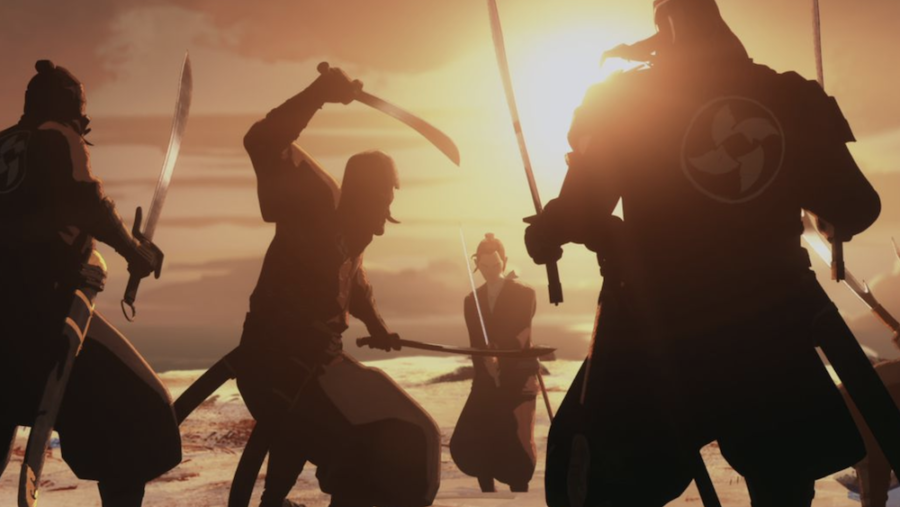
Ten minutes into Episode 1, an upbeat, handless noodle chef named Ringo, idolizing Mizu and desperate to serve as her squire, joins the swordsman on her adventure.
Meanwhile, the narrative charts the parallel stories of Princess Akemi, the pampered but independent daughter of an ambitious lord. For her part, Akemi is engaged to Taigen, a talented, arrogant swordsman.
The latter, after losing a duel to Mizu, the unbeatable Blue Eye Samurai, disgraced and unable to marry Akemi due to the subsequent shame of the last bout, sets off after Mizu in a bid to restore his name and win a rematch.
While Akemi chases after Taigen, desperate to sway him for his quest for revenge and get hitched as planned.
Enemies Aligned
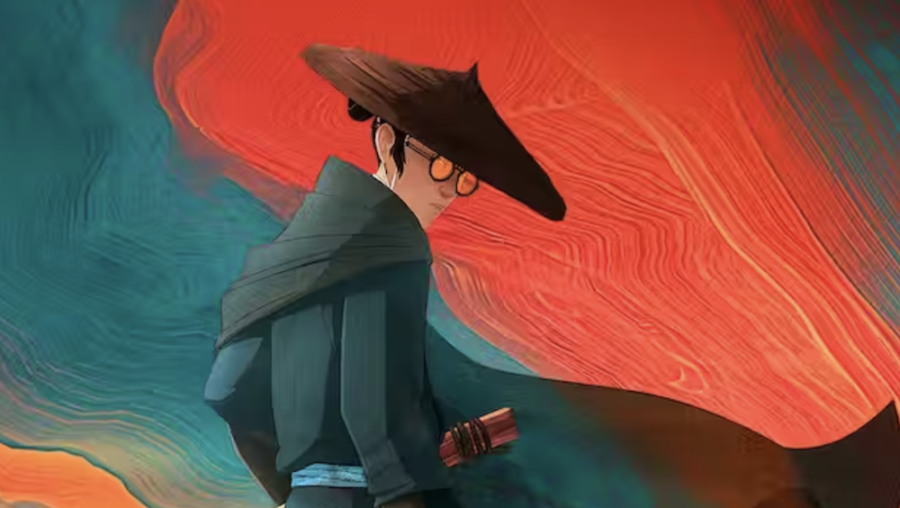
Thus, they form a loose band of compatriots/rivals, all eventually and unintentionally aligned against an uber-baddie, a positively, delightfully dreadful antagonist, equal parts loathsome and terrifying: Abjiah Fowler, voiced by the superb Kenneth Branagh.
A sadistic, depraved, mass-murdering Irish smuggler allied with the Shogun, Fowler resides in a towering castle-fortress off the coast of Japan. Enriching Blue Eye Samurai immeasurably with his abundance menace, Fowler defies the Sadoku edict (i.e., no Westerners allowed in Japan) through the tacit approval of the Shogun.
Whiling away his time, the European engages in a debauched existence, while plotting to overthrow that selfsame Shogun.
Visually Stunning
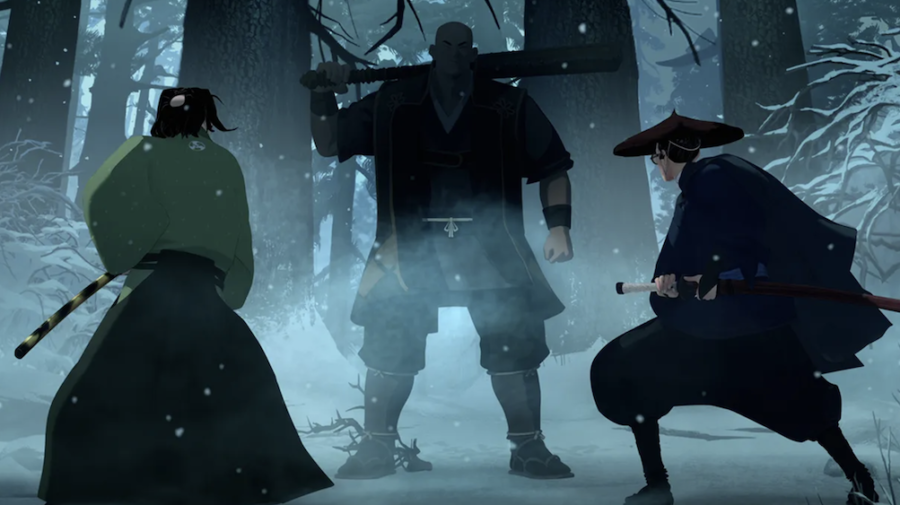
It is Fowler who Mizu, happening upon one of his smuggled guns during a noodle-restaurant brawl, pursues, hacking her way through legions of assassins, samurai, and—less literally—the avalanche of prejudice, injustice, and oppression opposing women and minorities in the region, at the time.
Blue Eye Samurai, at the risk of sounding hyperbolic, is visually stunning. Mizu’s controlled rage—the symphony of swordplay, blood spatter, dismemberment, and gore—is counterbalanced by nuanced, painterly images and startlingly serene aesthetics, constantly compelling you to pause your stream and stare.
Brilliance Of Animation
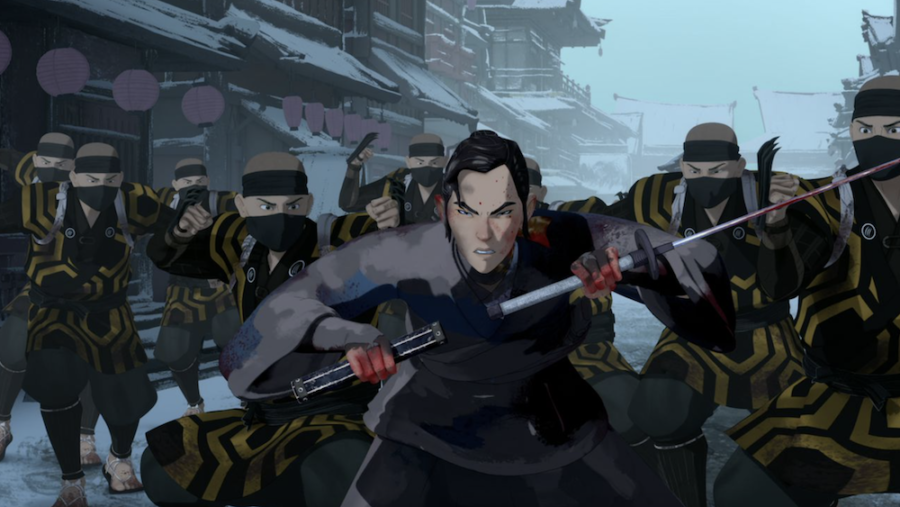
It’s an otherworldly experience, a veritable testament to the brilliance and potential of animation, indeed of art. Snow-speckled forests, back alleys pervaded by warm hues of lantern light, and the winsome mix of 2D and 3D animation, as a whole, cast a serious spell.
There’s even an episode, particularly memorable, employing traditional bunraku puppets to depict a story-within-a-story, zooming through the past, present, and future—across Japan—to achieve a masterful sequence.
Little Fanfare
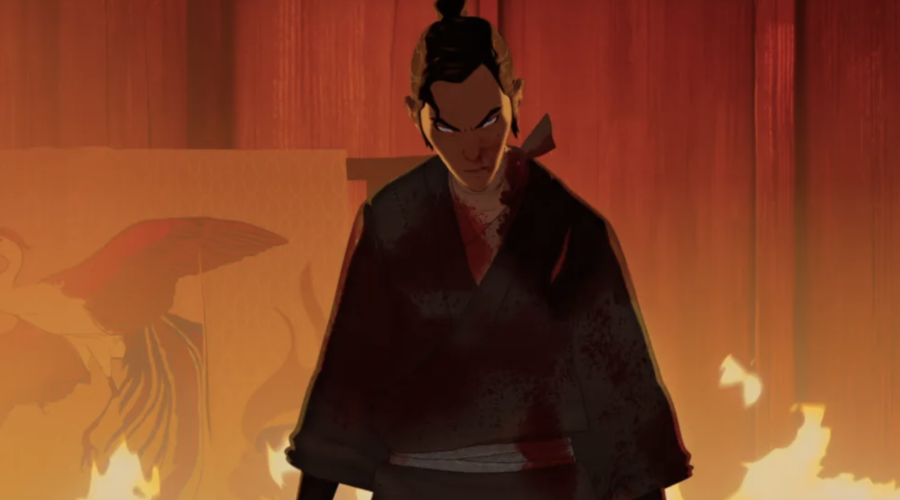
Blue Eye Samurai, debuting subtly on Netflix and with little initial fanfare, began development in October 2020 after the streaming giant greenlit production.
Green and Noizumi served as executive producers and showrunners, as well as writers, while 2D/3D-hybrid animation French firm Blue Spirit handled the visuals.
The creators took inspiration from Akira Kurosawa’s immortal samurai cinema and the much-mythologized character Zatoichi from Japanese literature. Clint Eastwood’s Man with No Name—America’s action film equivalent to Japan’s Zatoichi—also informed their work.
Stream Blue Eye Samurai
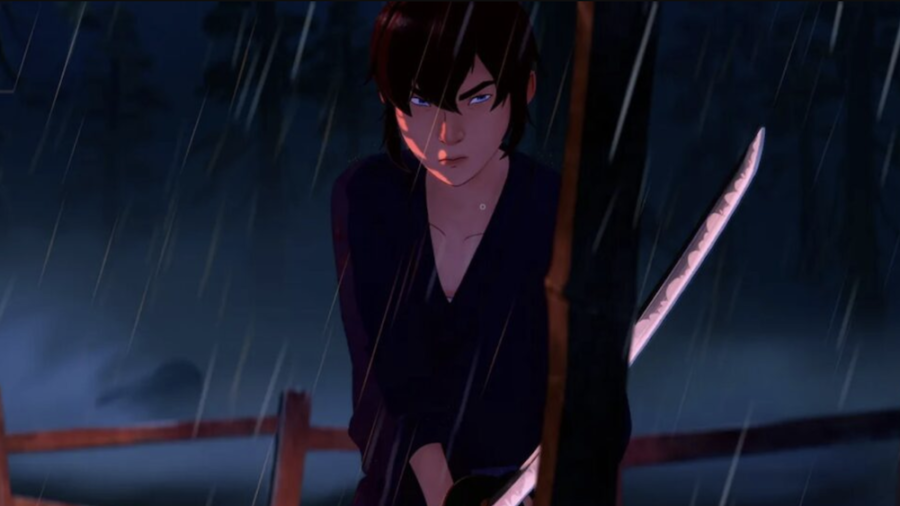
If you’d rather not take our word for it and binge the series ASAP—fine, but Rotten Tomatoes, perhaps more persuasive in your view, assigned Blue Eye Samurai a 100 percent critical rating.
That should be convincing, no?
The website’s critical consensus reads: “Visually dazzling while paying deft attention to character, Blue Eye Samurai is a masterfully rendered animated adventure.”
We couldn’t agree more. Netflix agrees, too, having already greenlit the series for a second season.
Do yourself a favor and stream Blue Eye Samurai today.












